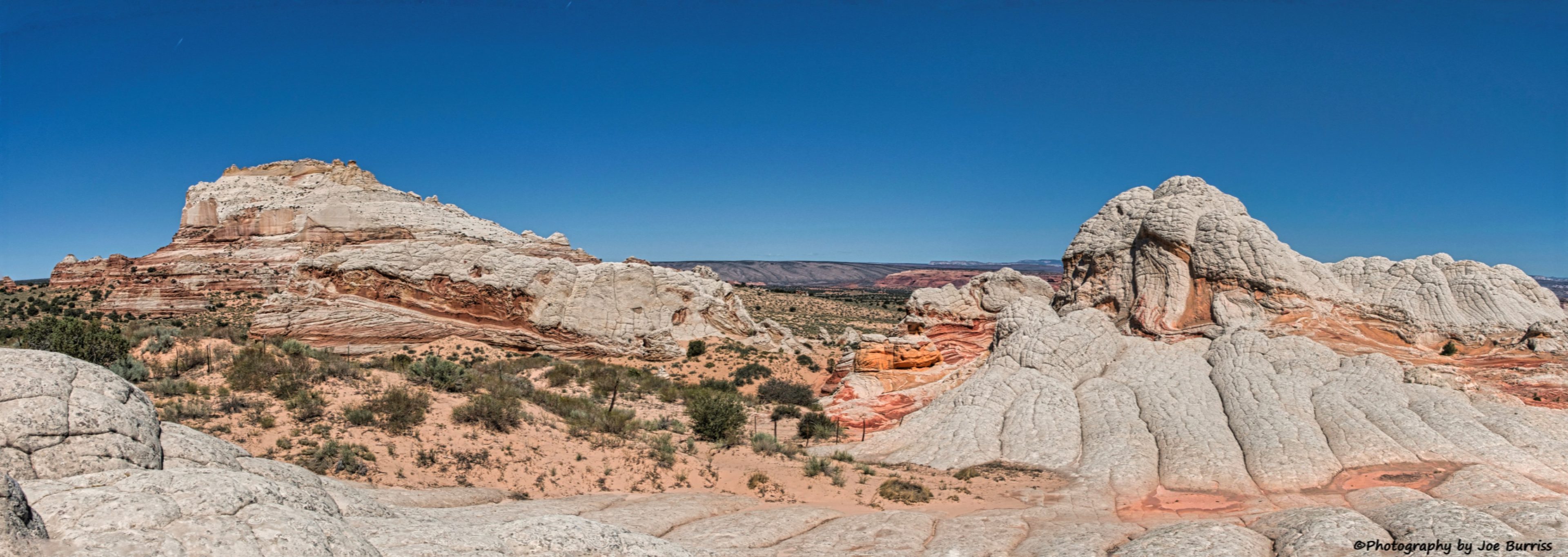
The White Pocket is part of the Vermilion Cliffs which are located in the second “step” in the five-step Grand Staircase of the Colorado (river watershed) Plateau, in northern Arizona and southern Utah. The Vermillion Cliffs extend west from near Page, Arizona, for a long way, in both Arizona and Utah. The first step of the Grand Staircase is the top of the the Grand Canyon, known as the Chocolate Cliffs, and the last step is Bryce Canyon National Park, known as the Pink Cliffs.
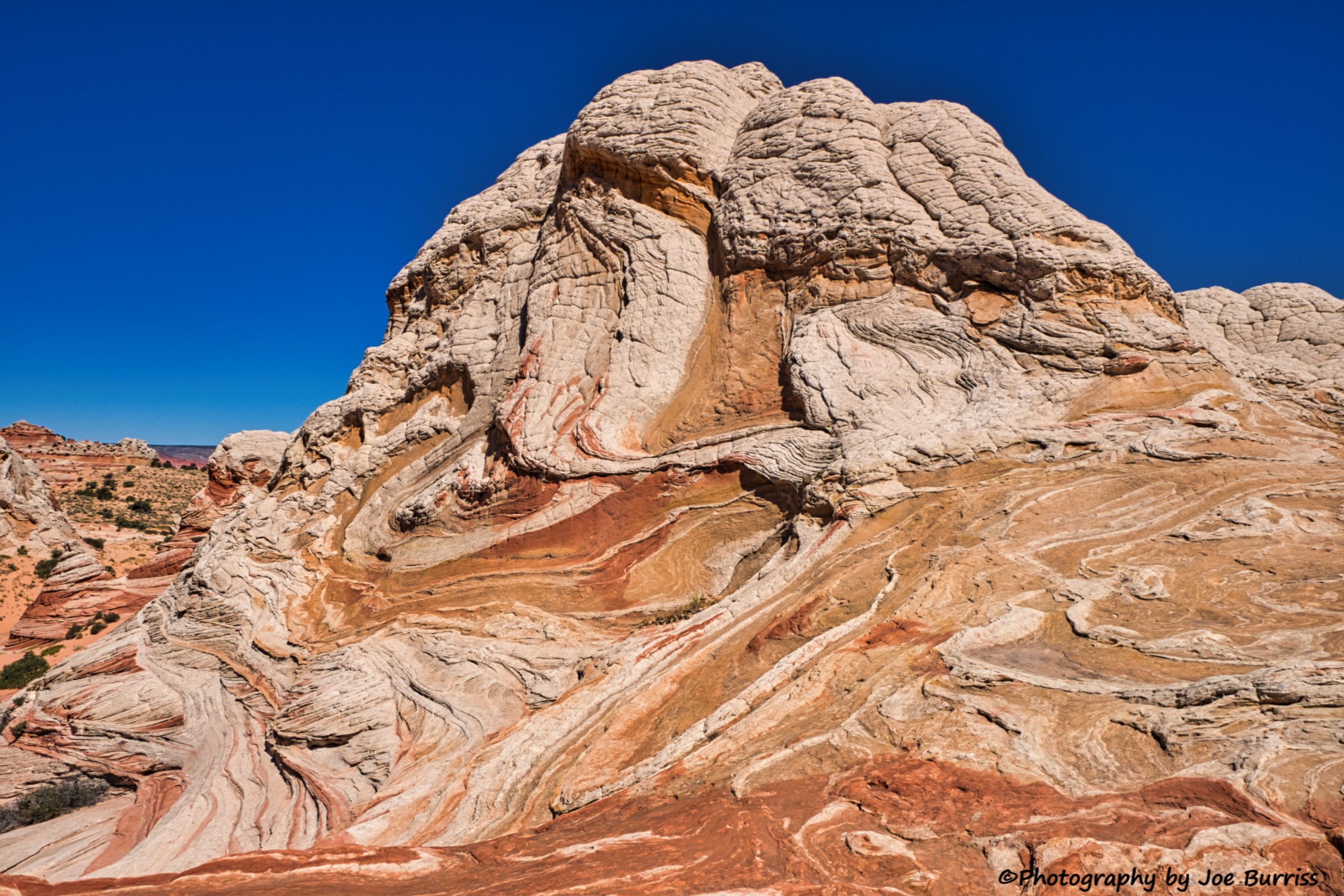
The Vermilion Cliffs are steep eroded escarpments made of sandstone, siltstone, limestone, and shale which rise as much as 3,000 feet above their base. These sedimentary rocks have been deeply eroded for millions of years, exposing hundreds of layers of richly colored rocks. All of this erosion created the mesas, buttes, and steep canyons that are found throughout the monument. So all of that means Vermilion Cliffs is one of the most beautiful places on earth. It is also not an easy place to explore with travel limited to dirt roads, deep sand tracks, or hiking through deep sand or across rocks, all in a desert.
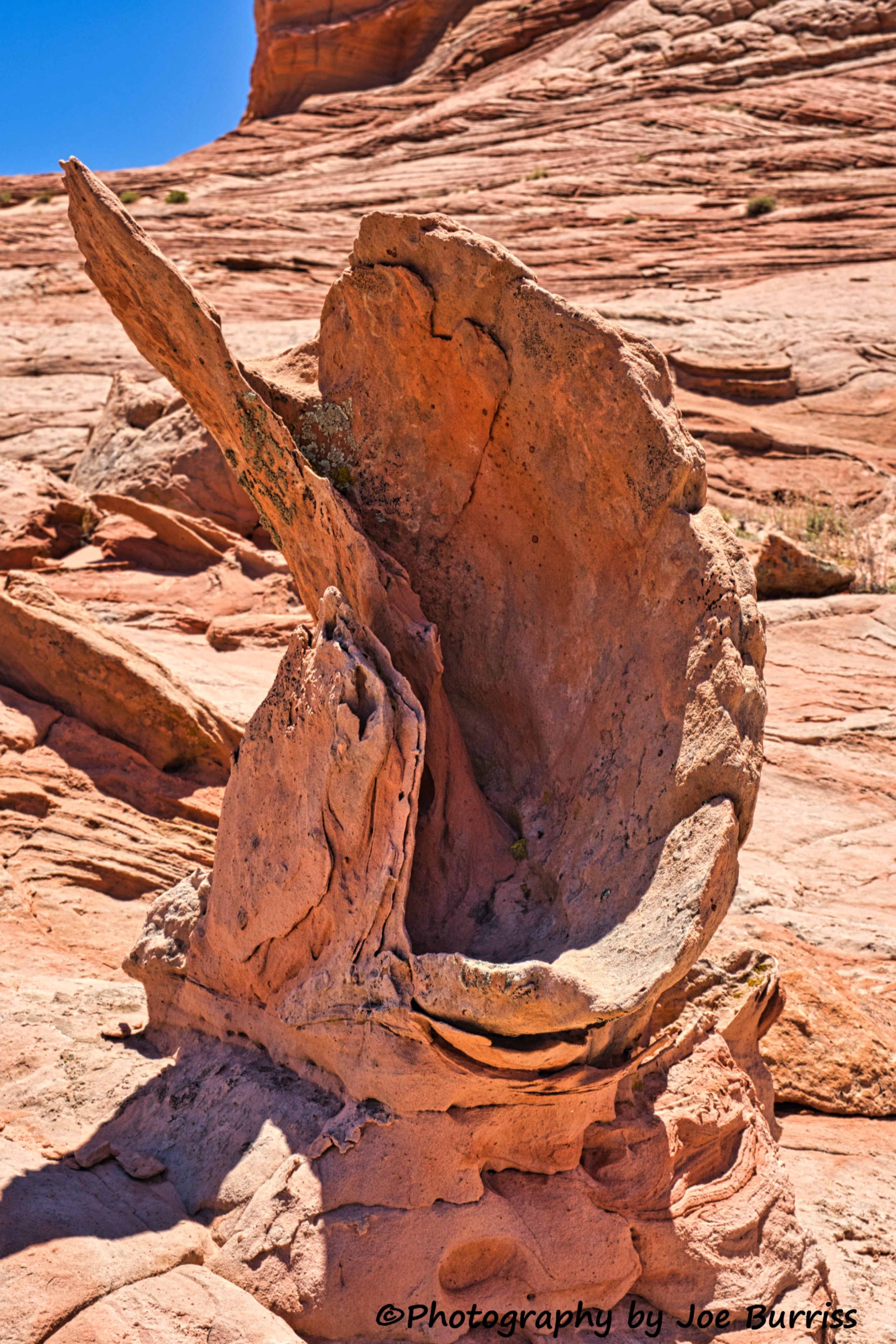
The White Pocket is an isolated patch of red sandstone hidden within the desert expanse of Vermillion Cliffs National Monument. The entire area is covered in a gray rock layer, sometimes only a few centimeters thick. Above the red sandstone the formations heave, twist, and drip creating the otherworldly look people come to see.
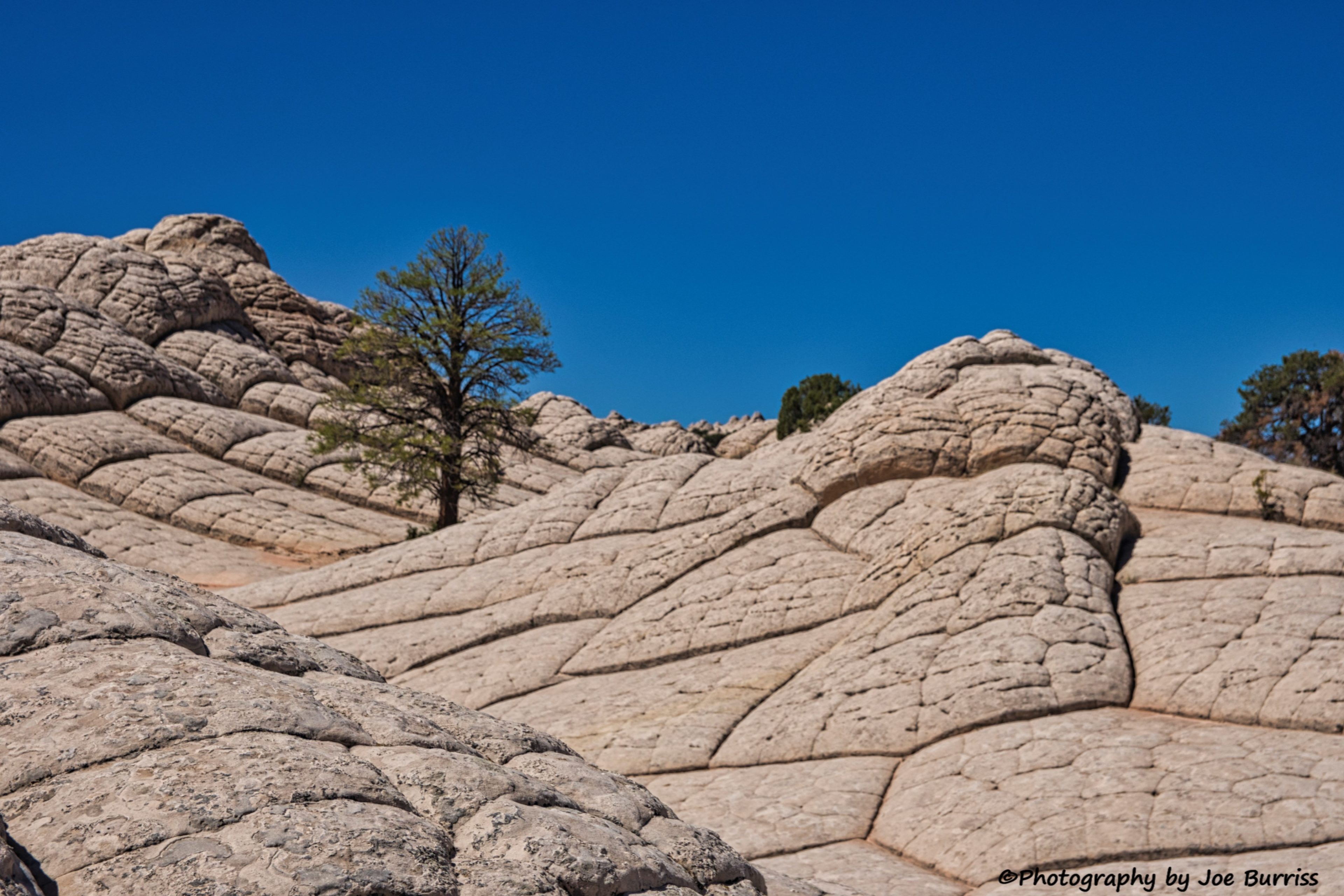
The extraordinary geology at White Pocket is not easily explained. Some geologists proclaim that White Pocket is a result of “soft sediment deformation”, meaning the contortions and twisting and turning at White Pocket occurred back in Jurassic time while the sand was saturated and before the sand was completely turned into rock. Others believe it was created by a huge sand slide triggered by an earthquake.

Joe doesn’t fully or even mostly understand all of this, but does know that the end result is the most otherworldly place he has ever seen. Swirls of color, rocks bent into right angles, potato chip shapes, or just amazing contortions. It is something you need to personally experience to really understand how truly amazing it is.
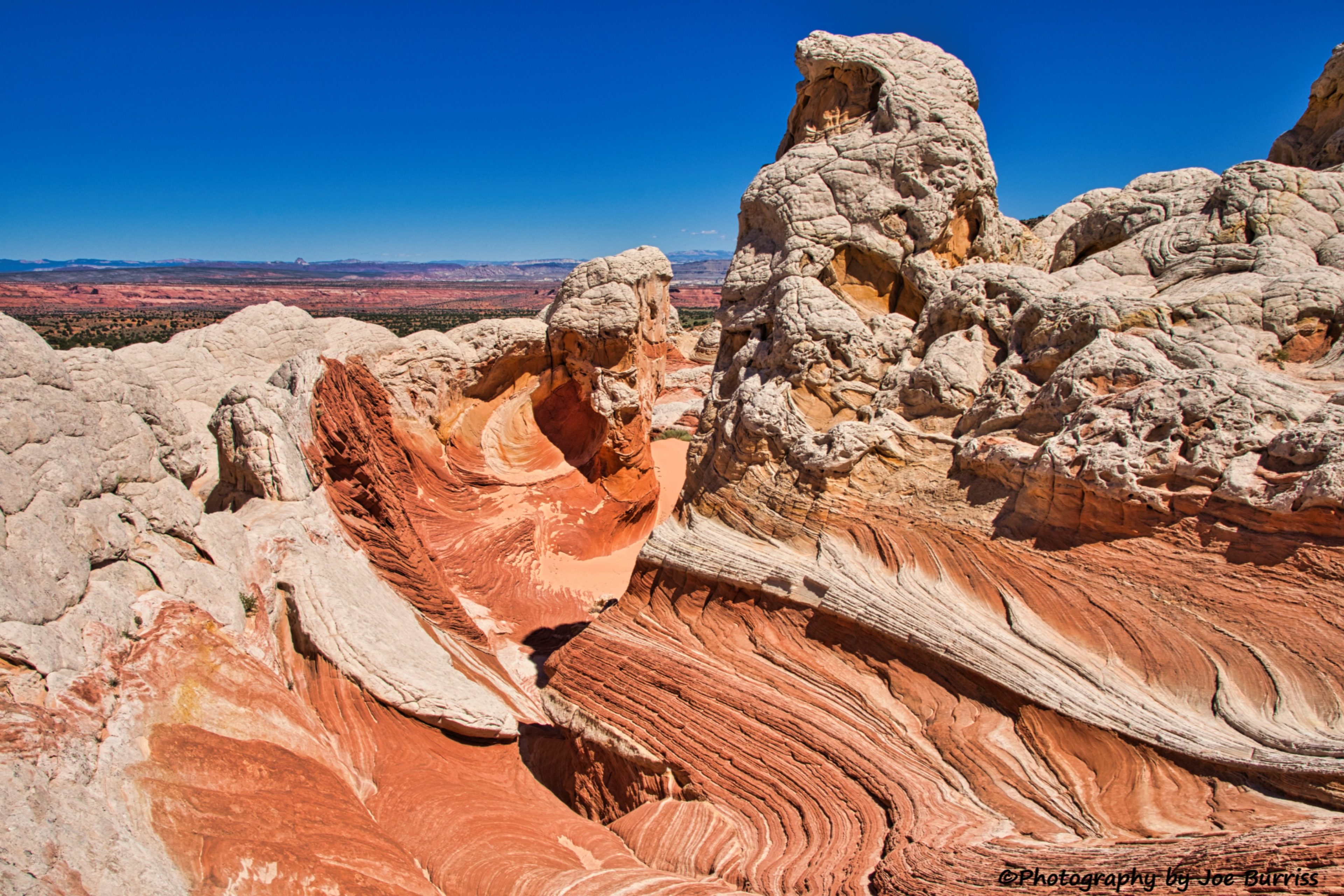

If you want to visit the White Pocket hire a guide. The drive to White Pocket requires a high clearance 4WD vehicle or better yet an ATV. There are more than 10 miles of loose deep sand to navigate and getting stuck can cost up to $2000 for a tow, or you could sleep with the coyotes until somebody rescues you. Joe went with Kanab Western Adventures http://www.kanabwesternadventures.com/. Mike, the owner and primary guide, was both knowledgeable and easy going. He safely got Joe (and two other adventurous souls) to White Pocket, which given our experience driving ourselves to South Coyote Buttes, is not a given. He also gave great advice on where the best photo sites were and seemed to instinctively know when to speed up or slow down our pace. The best thing about Mike is he said, “Give me a call and I’ll help you out with future adventures even if you don’t hire me.”